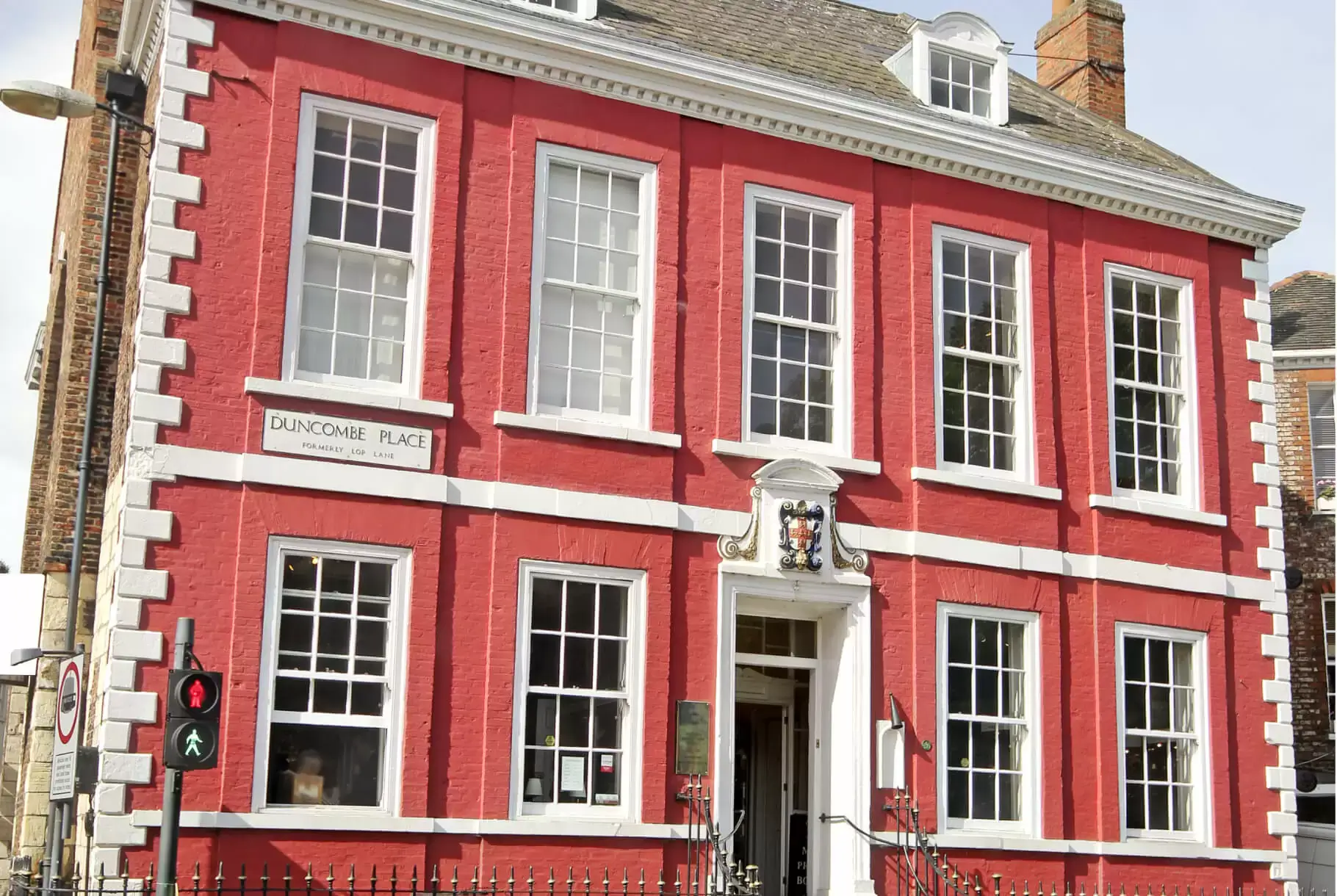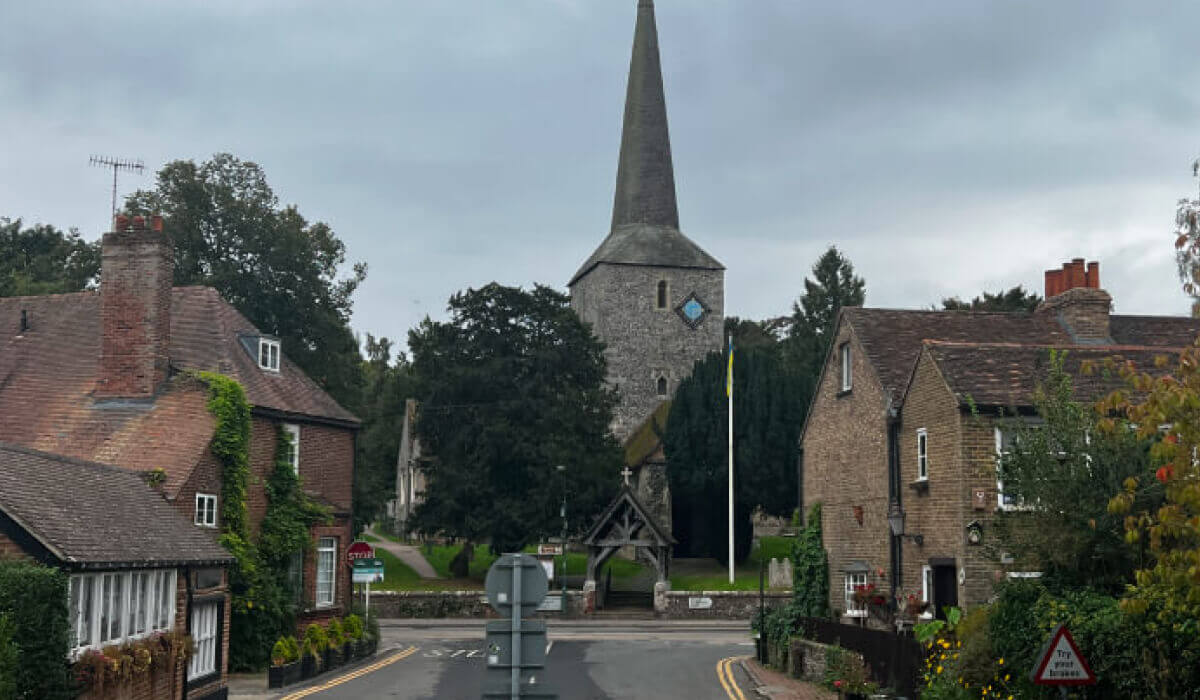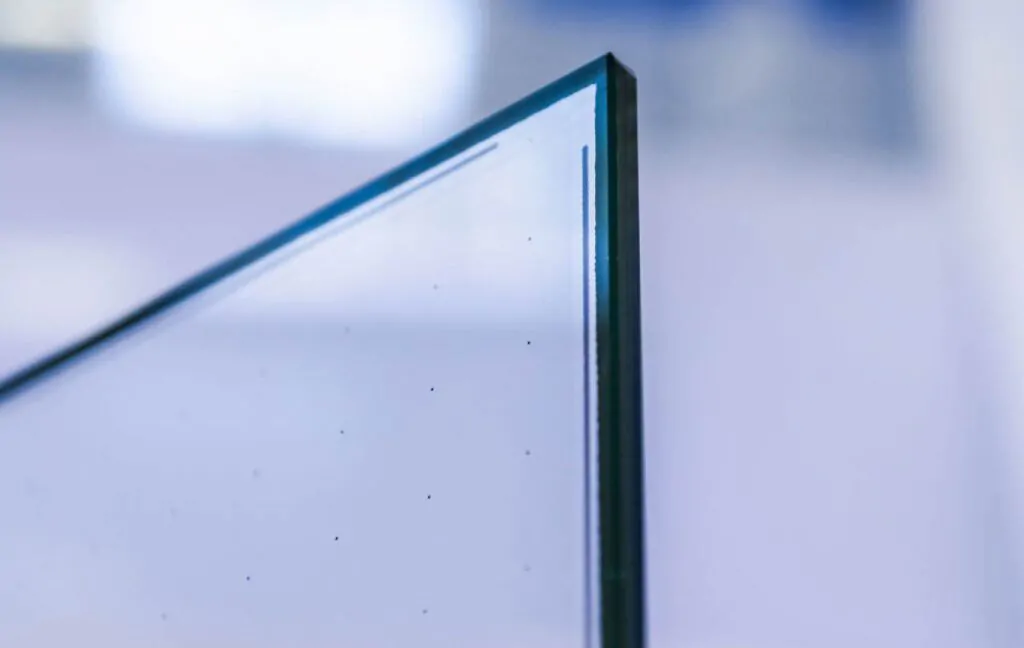Chronological overview
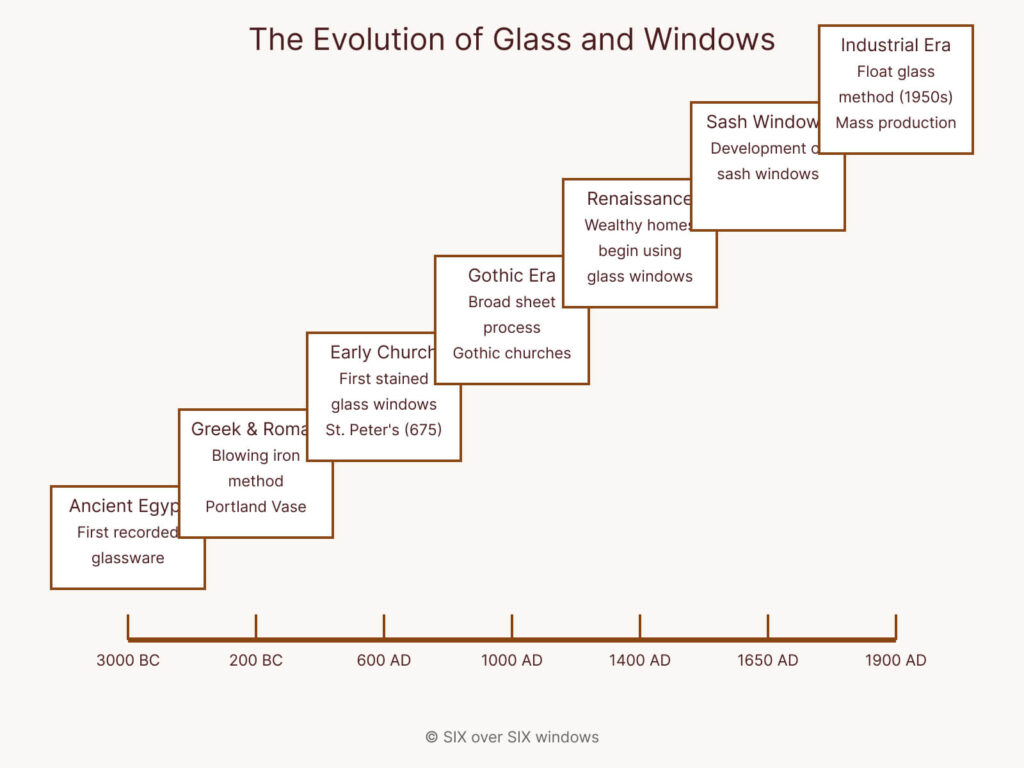
3000-2000 BC: first recorded glassware created in Ancient Egypt & Sumer (modern day Iraq)
200 BC-400 AD: Greek & Roman development of glass production via the blowing iron method. Creation of ornate decorative work such as the Portland Vase
600-1000 AD: early use of stain glass in churches with St. Peter’s in England being the first recorded example in 675 AD
1000-1400 AD: European golden age of stain glass technology utilising the ‘broad sheet’ manufacturing process and featured as centrepieces of gothic churches
1400-1650 AD: late Medieval/ Renaissance developments in glass-making technology lead to more widespread use of glass windows in houses of the wealthy and ruling classes
1650-1800 AD: step-change in glass production tied to developments in window design leads to early sashes and their rapid development over this period
1800-1900 AD: huge proliferation of glass windows across majority of western European properties including greater unit sizes due to ability to produce larger sheets of glass
1900 AD onwards: era of industrial glass production and use in windows. 1950’s ‘float glass’ method dominating majority of global production
Windows featuring glass have been central to building practices in the west for centuries, with glass remaining a crucial part of architecture to this day. However, many significant changes have taken place over the years. From its early usage in the Roman era through to Medieval and Victorian developments; architectural glass in windows is a fascinating story which will be explored in some more detail in this blog article.
For as long as buildings have existed the need to bring in light and ventilation has been a key consideration. For most of human history this would have consisted of an opening with a moveable cover which could be closed against the elements. The incorporation of fixed glass on a frame, as seen on buildings throughout the world today, is the logical development of this human need for light and ventilation paired with technological developments over time.
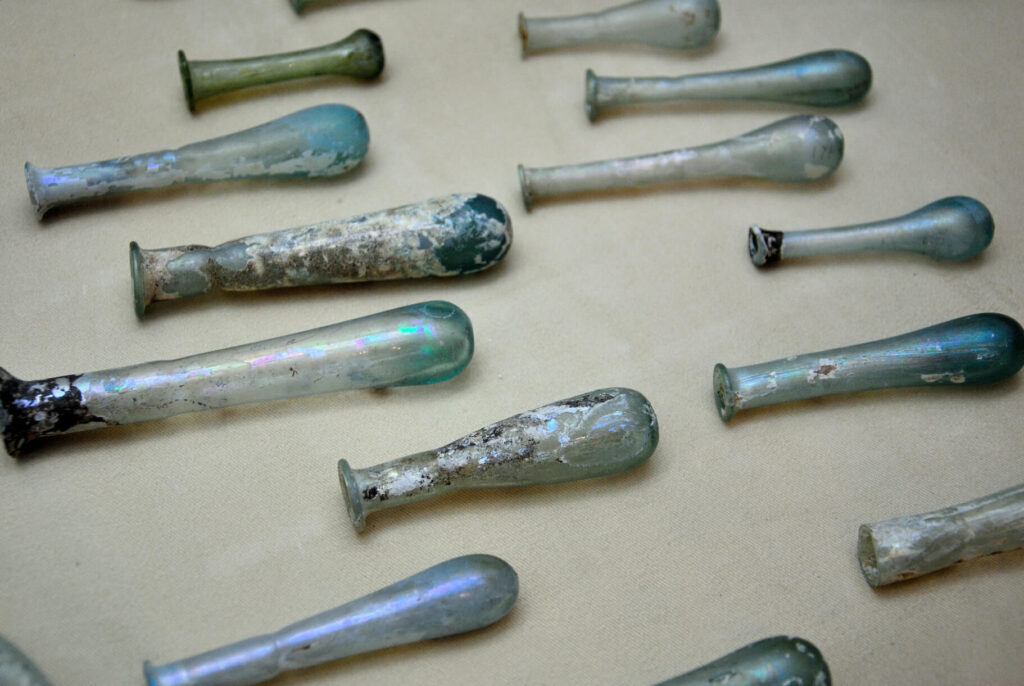
Early use of glass
The earliest examples we have of the working of glass come from ancient Egypt and Sumer (the highly advanced Mesopotamian civilisation centred on modern-day Iraq). Here archaeologists have found early examples of glassware dating from around 2500 BC, including vessels thought to be used to hold oils and cosmetics. Made using a lime-soda-silica composite, glass at this point was a status object largely restricted to use by elites.
Later, in the Roman period, glassmaking techniques were developed further with the blowing iron method inherited from the Phoenicians. This allowed for greater production volume and higher quality, culminating in a boom of the glass industry around the 1st century AD. Elaborate pieces such as the Portland Vase, pictured below, were created in this period.
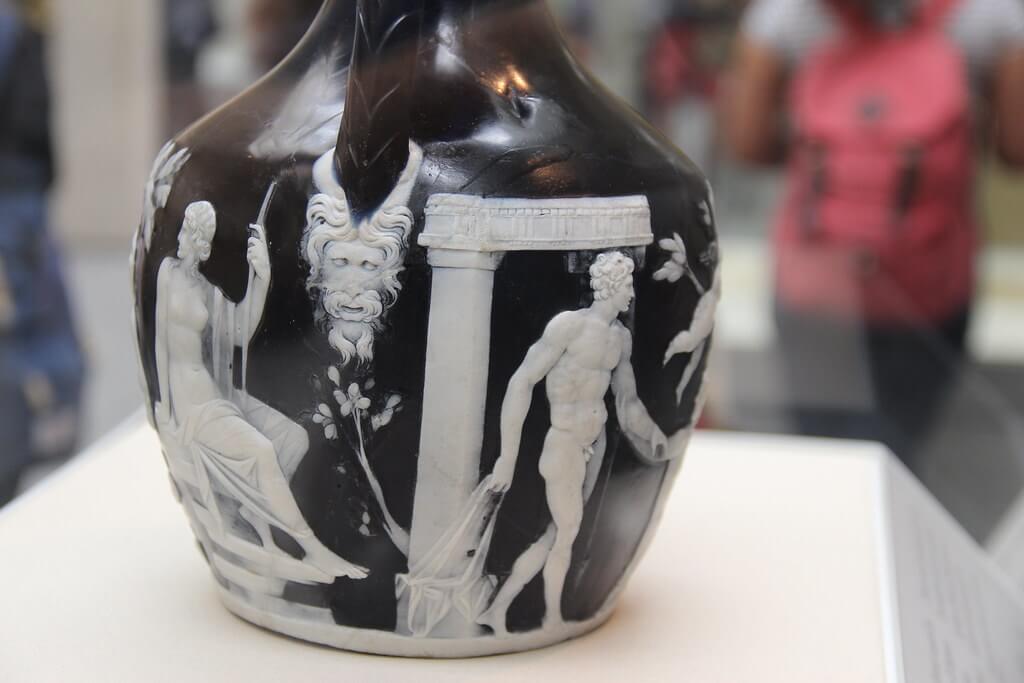
This leads on to an important distinction- whilst early examples of glasswork are considered above, these did not include the manufacture (at least in any notable quantity) of flat panes of glass for use in windows. This was due to the technological limits of the time, whereby thin and consistent sheets of clear glass were still a challenge to produce. As such (outside a tiny number of very elite buildings) it still would have been normal through the early Medieval period to have the vast majority of buildings with open window areas protected only by a wooden shutter, or a material serving the same purpose.
Stain Glass Windows
“If you want to assemble simple windows, first mark out the dimensions of their length and breadth on a wooden board, then draw scrollwork or anything else that pleases you, and select colours that are to be put in. Cut the glass and fit the pieces together with the grozing iron. Enclose them with lead cames….. and solder on both sides. Surround it with a wooden frame strengthened with mails and set it up in the place where you wish.”
– Theophilus the monk describing stain glass techniques circa 1100AD
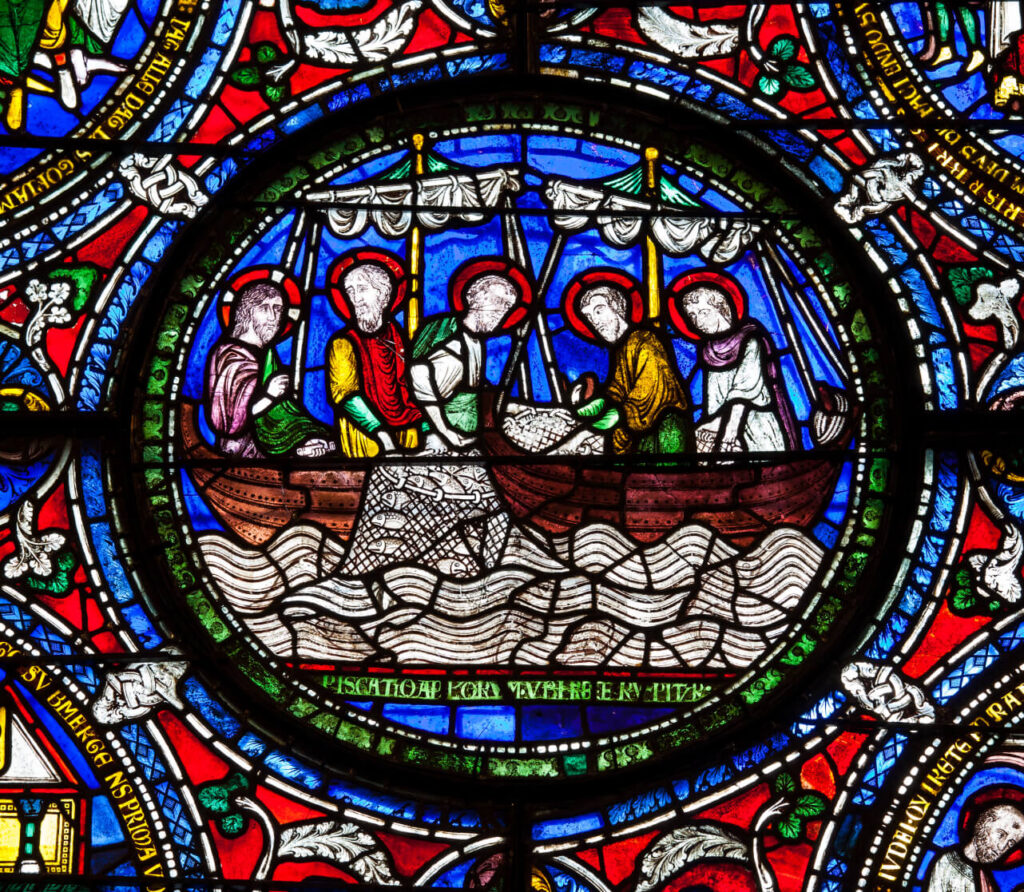
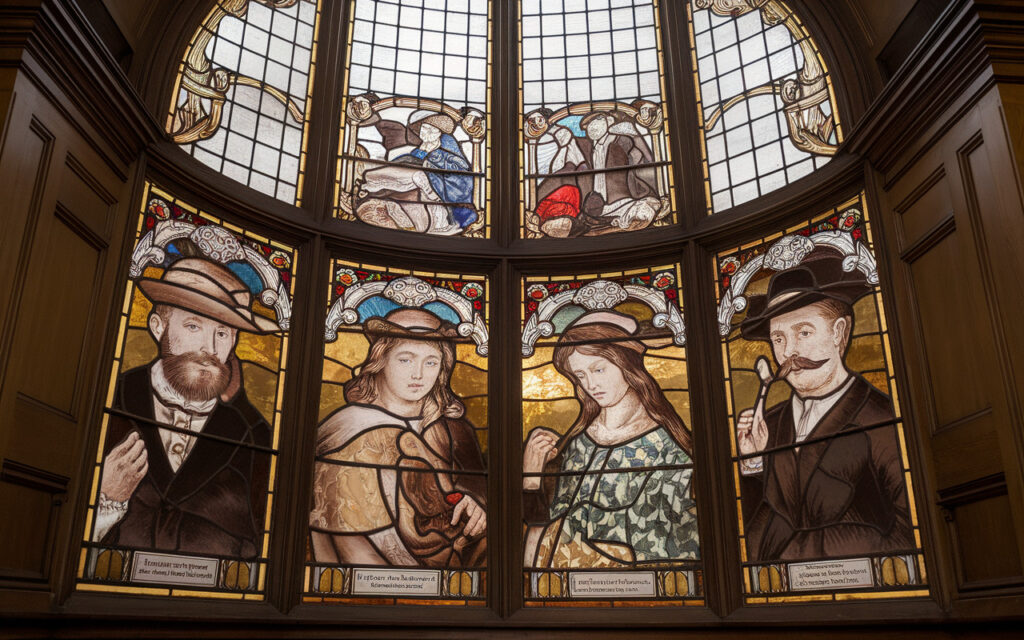
Moving into the middle medieval period from around the 10th century AD, one sees increasing usage of stain glass in churches. While there were earlier examples, such as St. Peter’s church mentioned above in this piece, the middle Medieval era can be considered the rollout period of high-quality stain across Europe. Utilising the 12th century broad sheet manufacturing process and initially comprised of many brightly coloured smaller panes between lead frames, these would eventually get larger and designs more elaborate over time.
Through the Tudor (1485-1603) and the Stuart periods (1603-1714), whilst glass continued to adorn churches, glass windows on residential properties were still largely the reserve of the noble and wealthy. These windows generally used small panes of glass with complex lead latticework between them, as seen pictured below, due to continued limitations in manufacturing larger sheets.
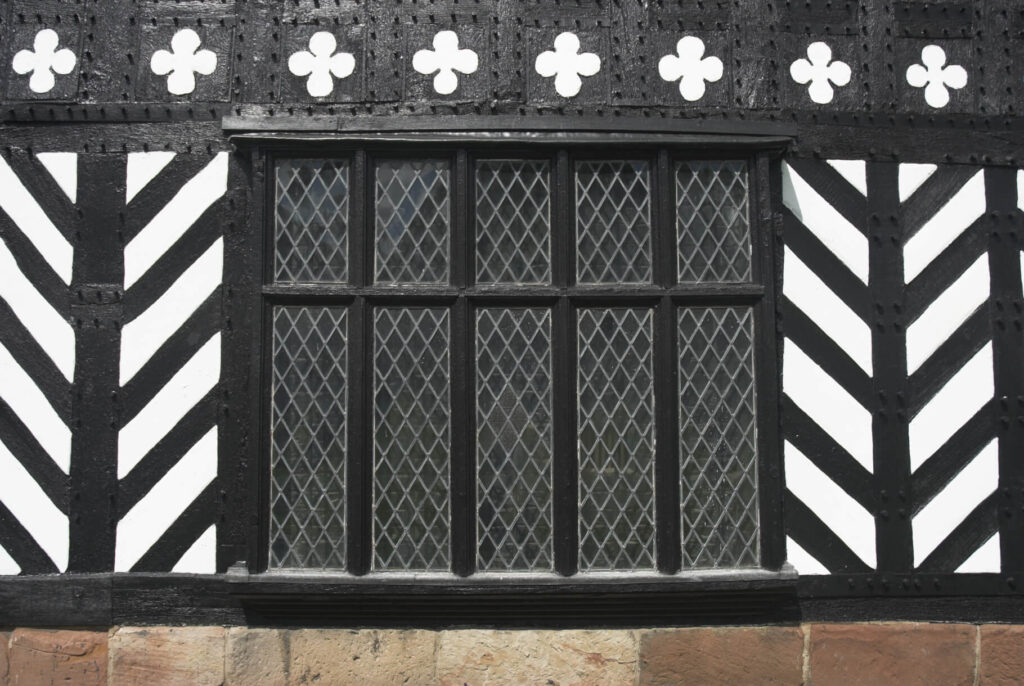
Tudor period window
Sash window revolution
The real step change occurred from the 1700s onwards with the creation of sash windows, supported by advances in technology and the crown glass production method. As explored in another blog article, sash windows changed the nature of European architecture forever. Beginning as a feature adorning homes of the wealthiest, due to their cost, but also, in the case of England, the enforcement of the window tax which ran for over 150 years from 1696.
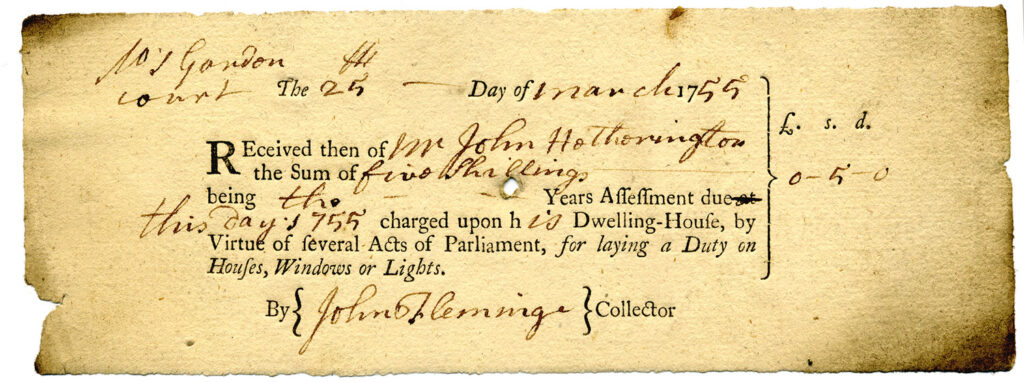
Over the Georgian and into the Victorian era though their use filtered down through society with countless residential streets across London today featuring sash windows from this era. Utilising larger sheets of glass and with a higher ratio of glass to frame, sash windows not only let in more light but also provided elegant aesthetics and increased the total amount of wall area dedicated towards windows.
The industrial age
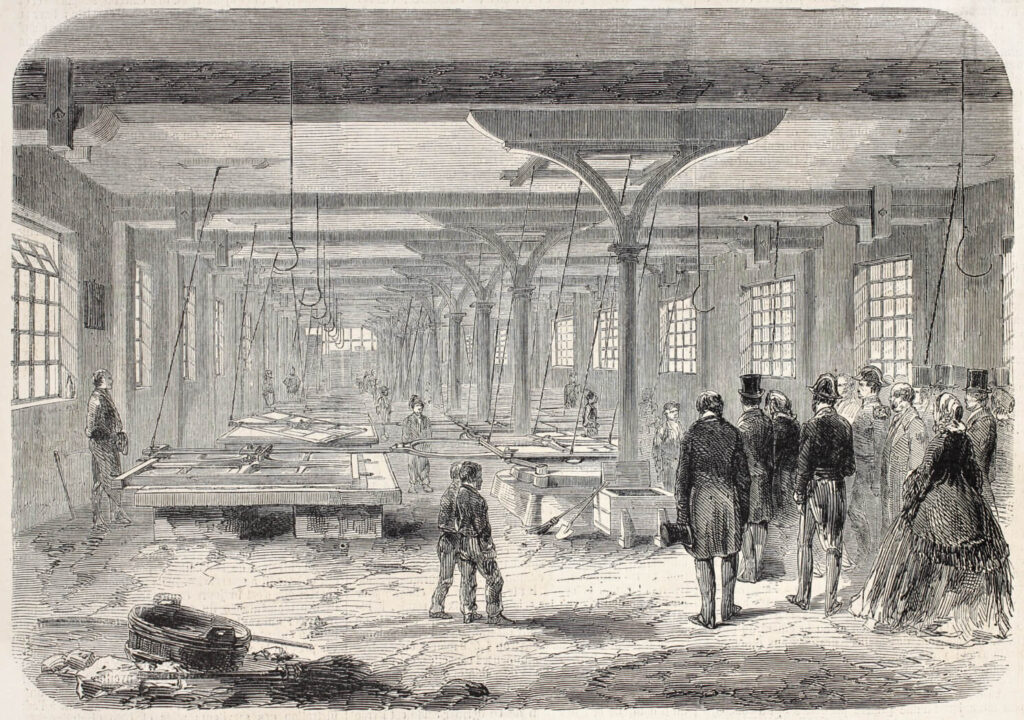
A visit by Napoleon III of France to a glass-casting factory in 1858 showed importance placed on the glass industry
Moving through to the 19th century and with the industrial revolution in full swing in Europe, glass production was able to occur at a much higher volume. This meant more accessible glass and went hand in hand with the building boom of this era with the huge enlargement of cityscapes across Europe (and into the 20th century the USA also). The invention of the machine rolled glass was an important tool in this, as was the float glass method developed in the 1950s, and remains near-universal to this day.

Child worker in a U.S glass factory early 20th century
High technology and present-day use
In the present day, glass use is central to building practices. Whilst the motives for using glass remain the same, the technology involved in its manufacture has come a long way.
Today, large-scale glass production relies on computing and precision machinery to achieve highly standardised finished glass in all types of thickness, glazing and other variations.
Buildings from the modern era also incorporate a variety of new materials including PVC, composite and aluminium for window frames to increase lifespan and improve other aspects such as thermal efficiency.
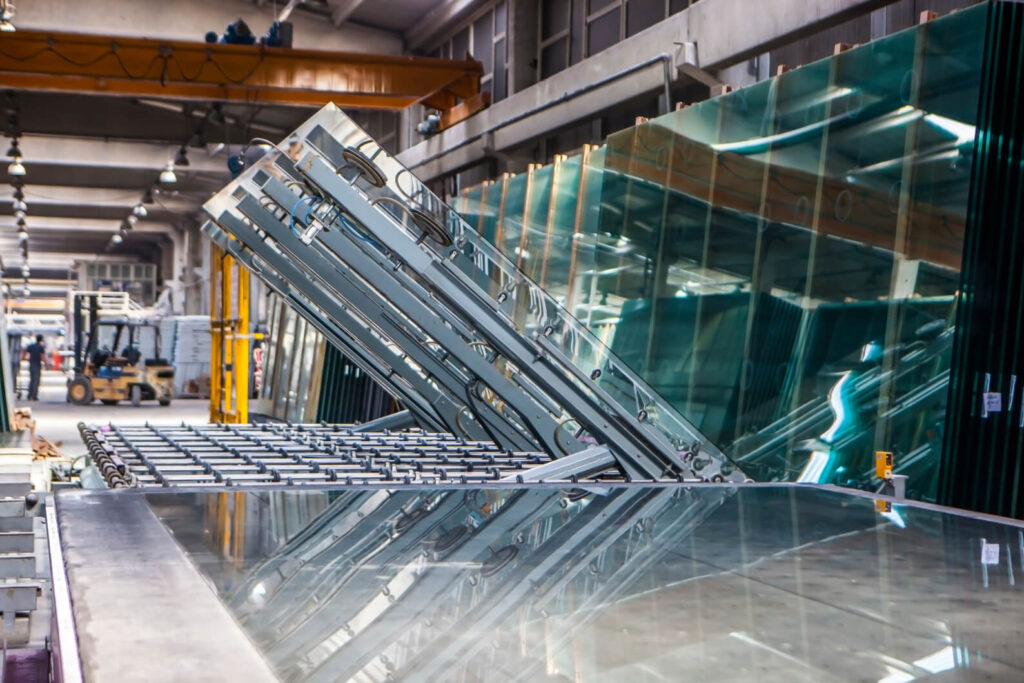
Modern factory producing glass sheets for windows

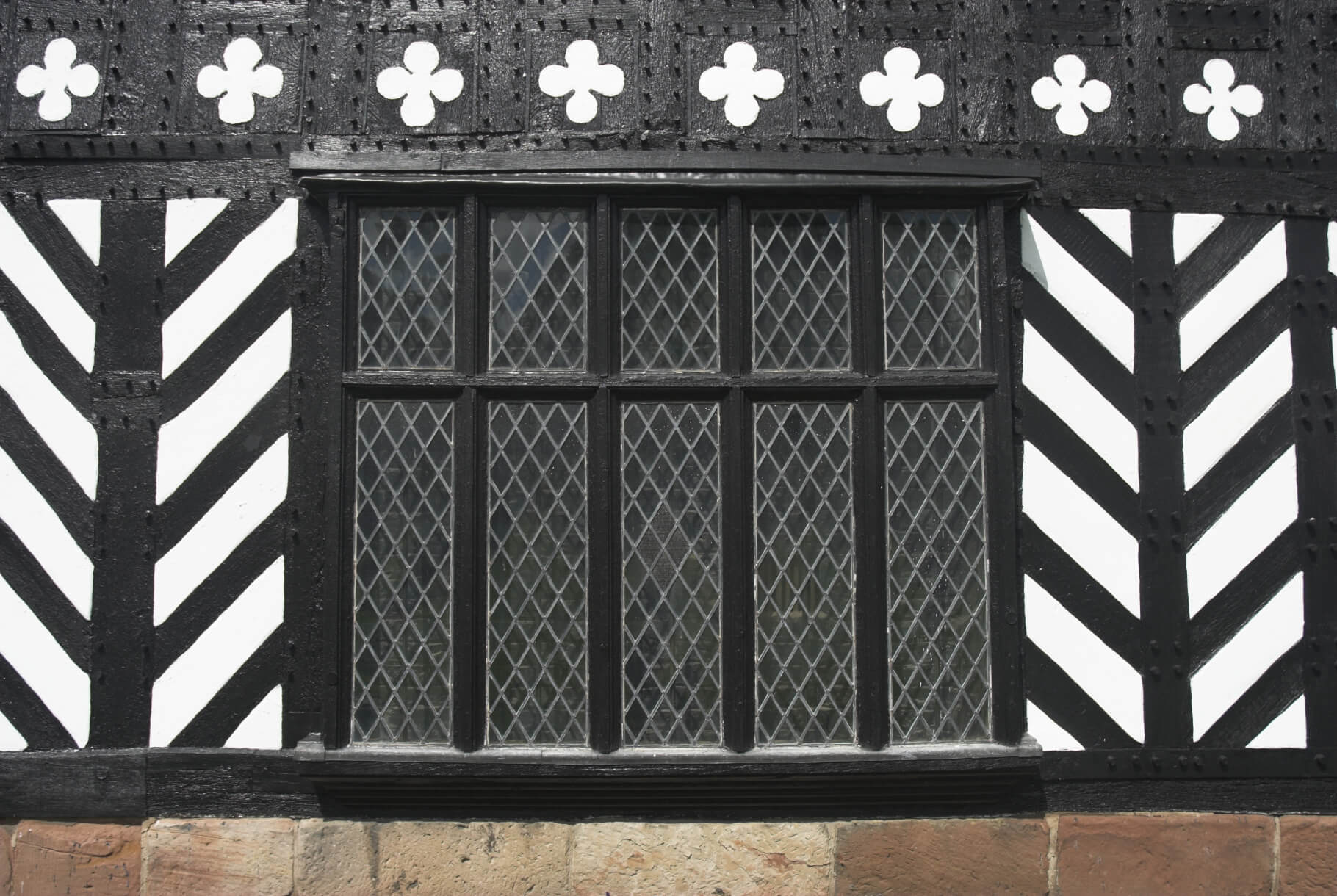
 Adam Brick
Adam Brick